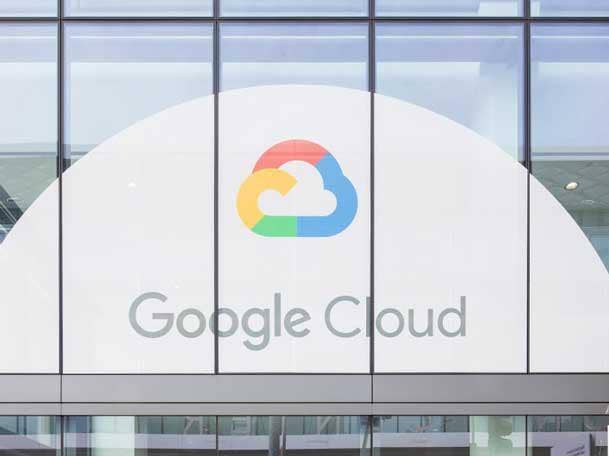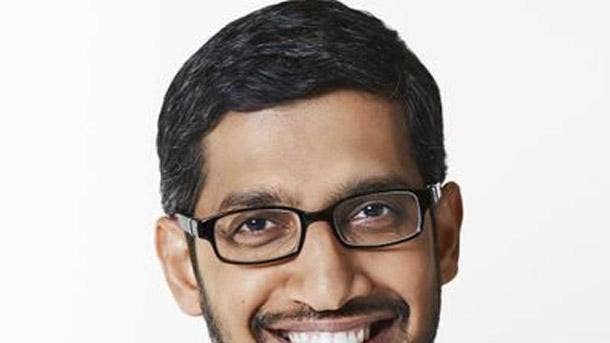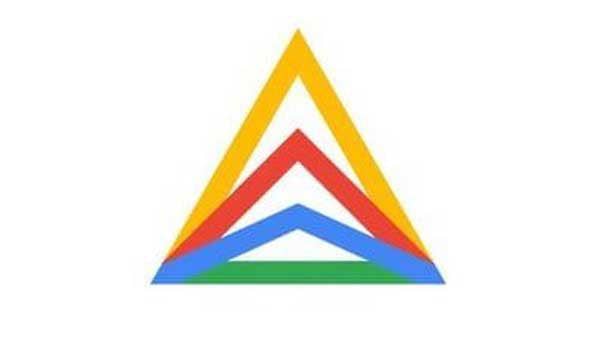The 10 Biggest Google Cloud News Stories Of 2020 (So Far)
So far in 2020, Google has seen its share of controversies, challenges and accomplishments across both its consumer and enterprise businesses.

Google In The News
Google’s technological prowess, thought leadership, massive capital investments, and search and advertising dominance consistently thrust the internet giant’s business practices to the forefront of national news.
So far in 2020, a year turned on its head by a global pandemic, Google has seen its share of controversies, challenges and accomplishments across its consumer and enterprise businesses. The company has been on the front lines of the fight against COVID-19 while gearing up for another major regulatory battle.
As those issues generated headlines, Google steadily advanced its strategy to scale its enterprise cloud business, looking to challenge leaders Amazon Web Services and Microsoft Azure in a rapidly growing but ultra-competitive market.
And amid the pandemic and regulatory controversies, Google’s parent company, Alphabet, became the fourth company in history to reach a value of $1 trillion.

10. Google Cloud Staff Streamlining
After taking on waves of new workers in several acquisitions, Google Cloud confirmed in February it was aiming to ramp profitability by instituting staff reductions.
The reductions that would come were part of “organizational changes to a handful of teams,” Google said.
Thomas Kurian, who became Google Cloud CEO at the start of 2019, had been making sweeping organizational changes in his first year leading the third-largest public cloud. Most involved hiring new employees, especially in Google Cloud’s sales organization, which Kurian the previous year had pledged to triple as part of an enterprise push targeting specific verticals.
But as Google looked to improve how it went to market and engaged partners and customers across industries and geographies, the company said it was time for “difficult, but necessary” restructuring that impacts “a small number of employees.”

9. $10 Billion Investment
Google CEO Sundar Pichai in February pledged to spend $10 billion throughout 2020 on adding offices and building out data centers across the U.S.
The internet giant aimed its investments at 11 of the 26 states in which it already operates, Pichai said in a blog post: Colorado, Georgia, Massachusetts, Nebraska, New York, Oklahoma, Ohio, Pennsylvania, Texas, Washington and California.
The planned 2020 spend will create thousands of jobs and stimulate local economies in many of the same jurisdictions in which state attorneys general are preparing probes into Google’s advertising, search and Android businesses.
“These investments will create thousands of jobs—including roles within Google, construction jobs in data centers and renewable energy facilities, and opportunities in local businesses in surrounding towns and communities,” Pichai said.

8. Anthos Invades AWS
Google laid out plans in April to invade its competitor's turf with the coming release of Anthos on AWS.
Google soon after generally released a version of its hybrid and multi-cloud Kubernetes platform certified to run workloads on rival Amazon’s industry leading public cloud.
Google Cloud also told CRN that Anthos on Microsoft Azure was under testing and Anthos support for virtual machines (VMs) was in early preview with customers. The latter will enable organizations to “bring policy and automation for both containerized and VM-based workloads—no matter where they are in their modernization journey—through Anthos,” Google Cloud told CRN.

7. New Cloud Regions Revealed
Google Cloud’s global expansion accelerated in March, with the hyper-scale provider that’s chasing the industry’s two leaders, Amazon Web Services and Microsoft Azure, revealing four new cloud regions were in the works to better serve international markets.
As it brings new data centers online this year in the U.S., Asia and Eastern Europe, Google Cloud said new ones are in the development stage for Delhi, India; Doha, Qatar; Melbourne, Australia; and Toronto, Canada.
Google Cloud Platform currently operates in 22 distinct regions across 16 countries. The new facilities in Delhi, Melbourne and Toronto are the second regions in those cities’ countries.
The four regions Google announced, like all its others, will consist of three distinct zones for redundancy to limit the possibility of service disruptions.

6. New Execs Ramp Industry Engagement Strategy
Google Cloud CEO Thomas Kurian (pictured) has been pushing hard on a vertical strategy to spur big customer wins across public sector, financial services, retail, health care, manufacturing, gaming, media and telco.
In May, Kurian brought to Google Cloud two seasoned executives to drive that strategy of engaging enterprise customers in targeted industries.
Lori Mitchell-Keller joined the company in the newly created position of vice president for industry solutions. The former SAP executive reports directly to Rob Enslin, previously SAP’s cloud chief who took over Google’s customer-facing operations last year.
George Nazi comes to Google from Accenture, where for almost seven years he was a senior managing director for the consulting giant’s communications and media practice. Nazi replaces John Honeycutt, who took a personal sabbatical, and he will report to Mitchell-Keller.

5. Pentagon Cybersecurity Win
In May, Google’s cloud division revealed it had won a prestigious Pentagon contract to upgrade the military’s cybersecurity posture with a multi-cloud solution built on Anthos, its new Kubernetes platform.
The award, through the Defense Innovation Unit (DIU), tapped Google to help defend American military resources against cyberthreats by implementing a zero trust security environment.
The seven-figure contract could likely be a prelude to a larger future deal through which the Defense Department leverages Google’s hybrid cloud platform and security technology to adopt a multi-cloud posture.
By building on Anthos, DIU will “run web services and applications across Google Cloud, Amazon Web Services and Microsoft Azure—while being centrally managed from the Google Cloud Console,” Google said.

4. Coronavirus Website Confusion
Google got dragged into a political kerfuffle on March 13.
Just as the country was coming to grips with the extent of the coronavirus crisis, President Donald Trump, at a news conference at the White House, said Google had dedicated 1,700 engineers to building a national website that would help people determine whether they should seek a test.
“Google is helping to develop a website—that is going to be very quickly done, unlike websites of the past—to determine whether a test is warranted and to facilitate testing at a nearby convenient location,” Trump said at the White House.
“They have made tremendous progress,” Trump added.
Within hours, Verily Life Sciences, a subsidiary of Google parent Alphabet, corrected the president and said it was Verily, not Google, that was planning to build a website to help triage patients potentially infected with coronavirus. Verily also noted that its COVID-19 testing tool was in the early stages of development, and would first be rolled out only in the San Francisco Bay area, “with the hopes of expanding more broadly.”

3. Trillion-Dollar Club
For the first time in its history, Google parent Alphabet attained a $1 trillion valuation in January, joining its two hyper-scale cloud competitors, and its primary smartphone competitor, in the elite club of American companies that have broken through, though not necessarily stayed above, that lofty mark.
Riding a nearly uninterrupted advance in its share price since the summer, Alphabet closed Jan. 16 on the Nasdaq exchange at $1,450.16—delivering a final market cap rounded at $1 trillion.
The stock continued climbing through the first half of February, then took a tumble in the second half of March before starting another upward charge back toward that lofty threshold.

2. Antitrust Anxiety
Google has been locked in conflict with regulators on both sides of the Atlantic for years.
After grappling for much of last year with European Commission investigations, those problems jumped backed across the pond last September when 50 Democratic and Republican attorneys general announced a bipartisan investigation into potentially “monopolistic” online search and advertising practices.
According to Wall Street Journal reporting in May, it appears the U.S. Justice Department, followed by a coalition of state attorneys general, will likely sue Google for alleged antitrust violations later this year.
Justice could bring a case against the Mountain View, Calif.-based tech giant as early as summer, with state AGs that have conducted their own joint investigation filing possibly separate charges in the fall, the newspaper reported, citing unnamed sources “familiar with the matter.”
The federal lawsuit will target Google’s advertising business as well as search practices determined to be anti-competitive. The various states, in an effort led by Texas Attorney General Ken Paxton, will focus solely on advertising, but it’s not clear if they would file independently or join the Justice Department’s suit.
While the newspaper’s sources said all signs point to lawsuits down the road, a final call hasn’t been reached in either the federal or state probes.

1. Confronting Coronavirus
For most of 2020, the novel coronavirus pandemic has dominated nearly every tech company’s business imperatives, from supply chains to staffing to conferences to product releases. That was especially true for Google, among the first to flag a case under its roof and take urgent action to limit the spread of the disease.
By the end of January, as COVID-19 spread throughout Asia, Google suspended operations at its offices in mainland China, Hong Kong and Taiwan. Then in February, after Google confirmed an employee in its Zurich, Switzerland, office had contracted the disease, it curtailed travel of its employees.
On March 10, Google took what, at the time, appeared an extreme measure, advising all employees across North America to work remotely when possible over the next month to help halt the spread of the virus.
Google then joined rival Apple in an accelerated effort to build contact tracing capabilities into mobile devices, enabling Android-powered smartphones to record people’s proximity to others who contracted the virus and alert them of potential exposure.